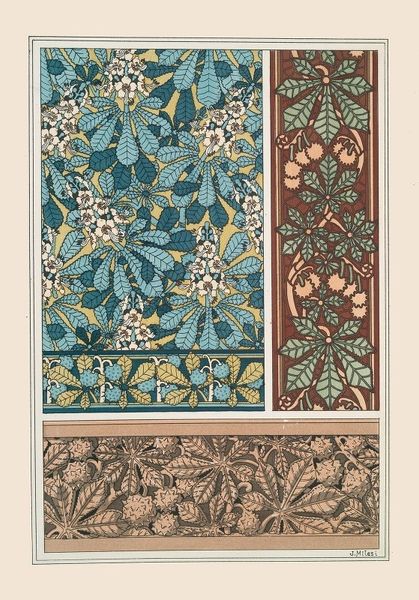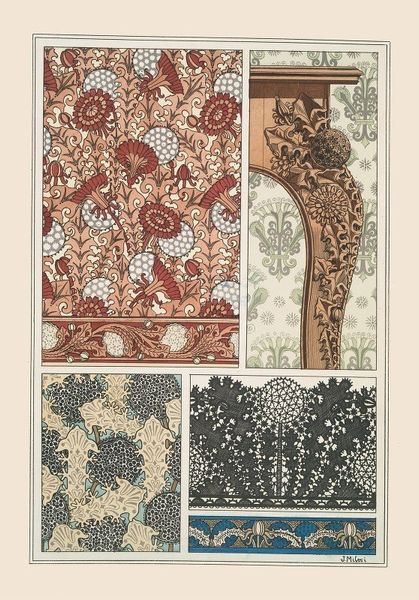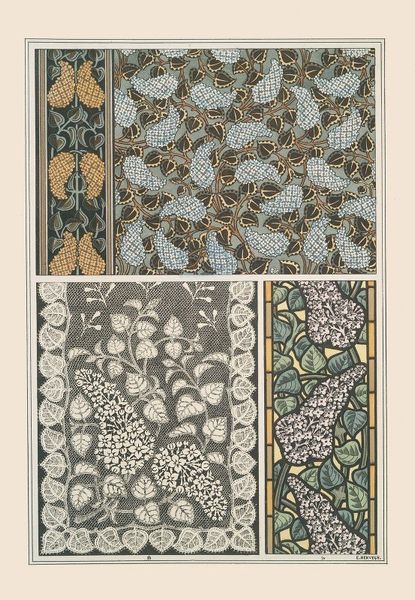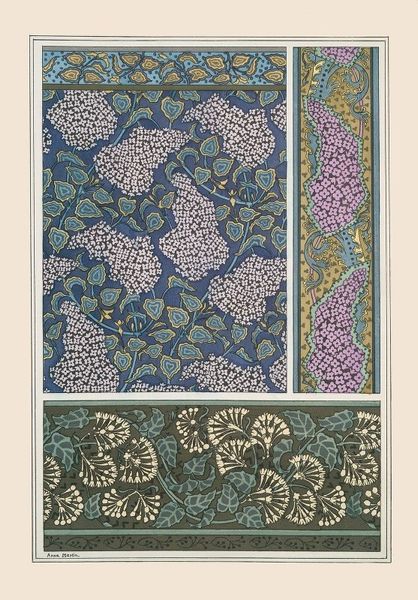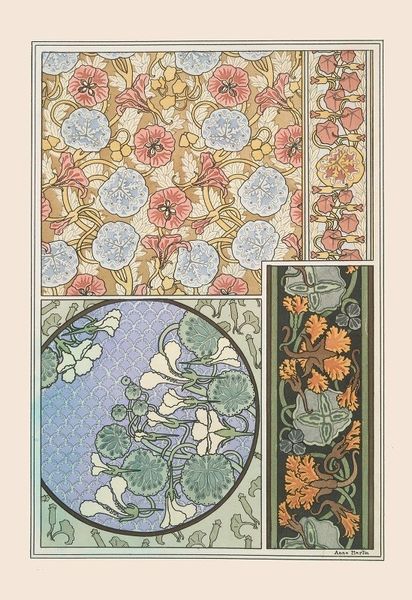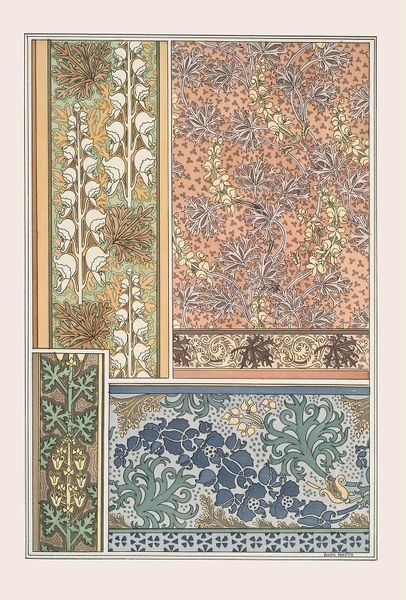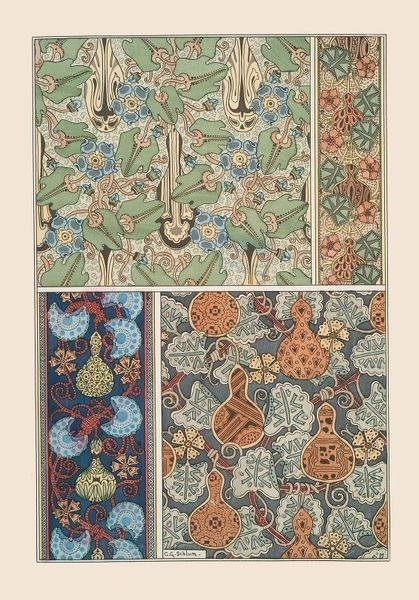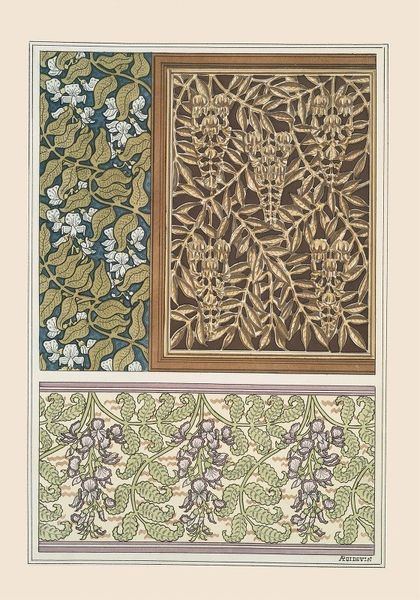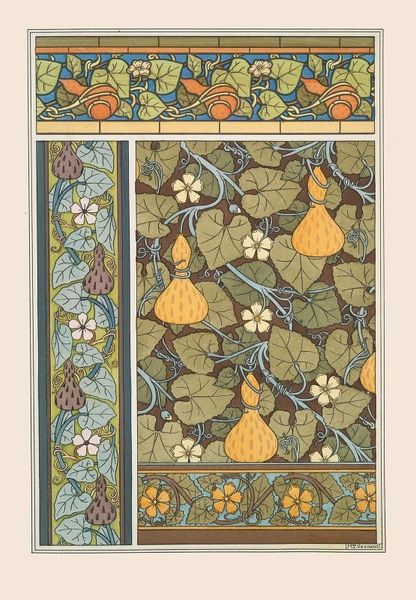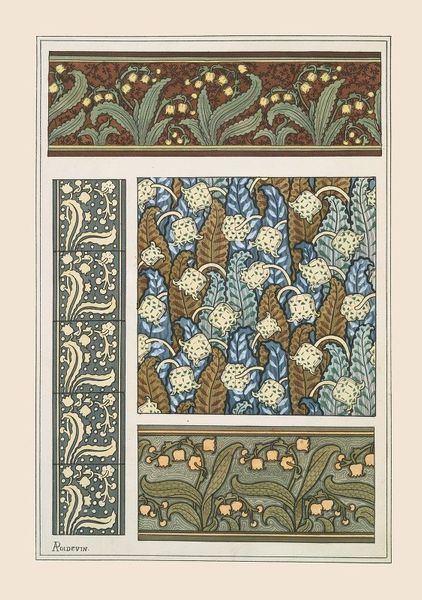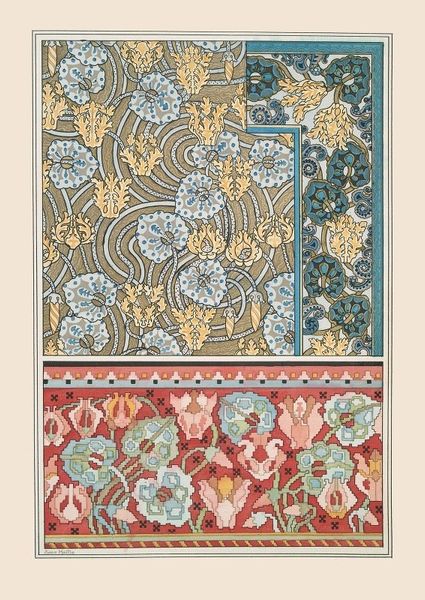
graphic-art, print
#
pattern heavy
#
graphic-art
#
naturalistic pattern
#
art-nouveau
# print
#
pattern background
#
pattern design
#
ethnic pattern
#
repetition of pattern
#
vertical pattern
#
pattern repetition
#
textile design
#
decorative-art
#
layered pattern
Copyright: Public Domain: Artvee
Curator: Let's delve into this eye-catching print by Maurice Pillard Verneuil, created in 1896, titled "Marronnier 3." It’s a vibrant example of graphic art from the Art Nouveau period. Editor: It certainly catches the eye! The layering of patterns is immediately striking. The muted color palette also evokes a sense of subdued opulence; I almost find it soothing. Curator: Indeed. Verneuil was deeply involved in the decorative arts, and this piece showcases the influence of the Arts and Crafts movement on Art Nouveau, a turn towards nature. Notice the chestnut motifs – the 'marronnier' itself? This print reflects a wider movement to ennoble crafts. Editor: Absolutely, I notice the repeated motifs and stylized presentation, especially the vase set against a pink floral backdrop, giving the suggestion of organic forms, meticulously stylized and patterned to suit the purpose of textile design. I’m compelled to consider its original usage; were pieces like this purely decorative? Curator: Likely part of a design portfolio meant for industrial application. These prints played a significant role in shaping aesthetic tastes beyond the fine arts—democratizing art in everyday objects like wallpaper or textiles. Verneuil's intention here feels directed to inspire pattern, function and the way art serves a broader populace. Editor: And, given the patterns are so strongly connected to the natural world, does this work attempt to create accessibility for populations growing distant to it? The image presents, rather boldly I may add, an idealized relationship with nature. Curator: An excellent point. These designs idealized the natural world and, consequently, influenced what consumers then desired and reproduced, reinforcing those constructed ideals of nature within a rapidly changing society. Editor: It seems fitting to look at it, now, through our modern lens and think critically about design, nature, and accessibility within a different, perhaps parallel, crisis. Food for thought, I'd say. Curator: I agree; it prompts us to re-evaluate our understanding and relationship to nature, and this design, as an influential component of Art Nouveau, served as an intersection point to engage a broader population in that changing cultural perspective.
Comments
No comments
Be the first to comment and join the conversation on the ultimate creative platform.

